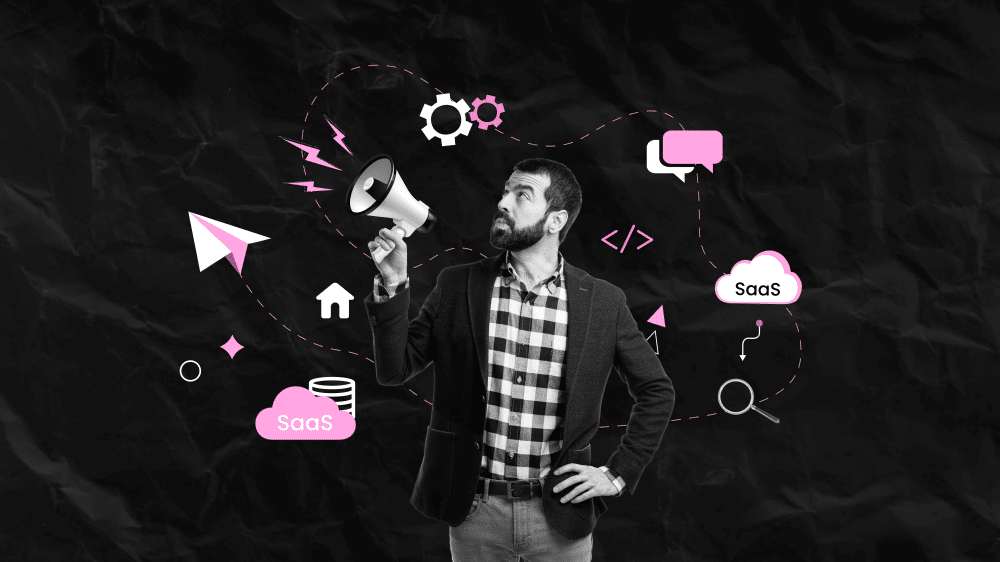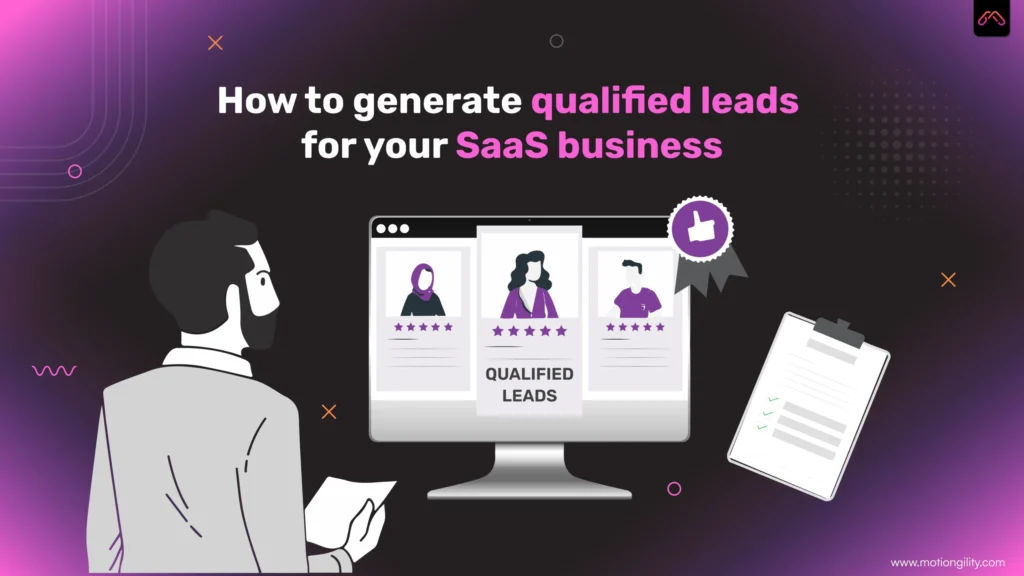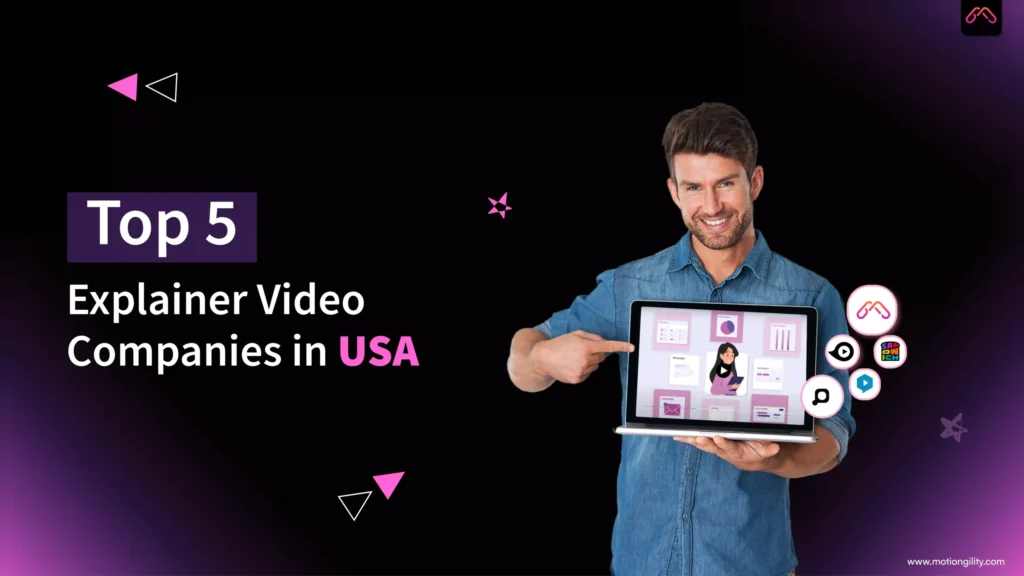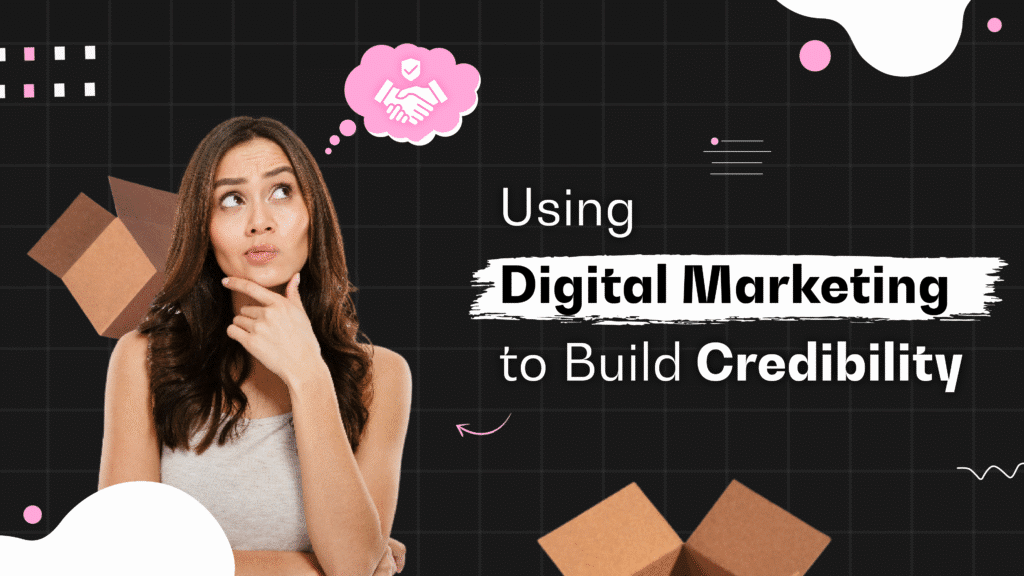Marketing a SaaS product can be a tough drive up the hill due to the multiple challenges marketers face while promoting their products.
A few include educating target users, communicating the USP, justifying the pricing, generating leads, etc.
But if it were that easy and manageable, things would have been completely different for marketers and SaaS-based startups.
SaaS Marketing is complex, you already know that. The general idea here is to cut through the fluff and reach out to the right set of people using effective strategies both in terms of cost and performance.
Below, I’ve outlined what it means to market a SaaS product, the key marketing strategies top startups use, and a few relevant marketing metrics for your better understanding in this blog.
What is SaaS Marketing?
SaaS marketing refers to promoting and raising brand awareness & leads for Software-as-a-Service products.
It involves positioning and making efforts to communicate the need for subscription-based cloud products to the target audience.
Since B2B marketing involves longer sales cycles, marketing SaaS products like payroll software and other business tools is a long game, because your target customers must be constantly nudged about your product.
With the right marketing channels, reaching them becomes easy to realize why the product is the perfect solution to their business problems, and persuade them to sign up for a free trial.
Difference between SaaS Marketing & Traditional Product Marketing
To sum up the difference between SaaS marketing and traditional product marketing, the former involves selling access to a service, while the latter involves making a one-off purchase.
But here’s a detailed differentiation breakdown between the two:
Difference | SaaS Marketing | Traditional Product Marketing |
Buying Cycle | Multiple stakeholders and touchpoints stretch the decision-making process as it’s more research-driven. | Usually, quicker decisions are made as items are physical and more retail-based. |
Subscription vs One-time Purchase | Is multi-layered with monthly, quarterly, or annual subscription plans, depending on the number of users and company size. | Is majorly a one-time lifetime payment or maximum, installment plan. |
Smooth Product Adoption | SaaS products have a low entry barrier in the face of product demos, free trials, freemium pricing, etc., for potential customers to begin and experience it. | Traditional products are a one-shot deal with an upfront purchase. |
Product Expansion | By adding new features, SaaS products can grow manifold and market their capabilities to customers through upsells. | Unless new features are added, traditional product marketing is on hold plus it requires an additional purchase for customers. |
Recurring Revenue Benefit | Through a subscription-based revenue model, SaaS businesses often experience a steady cash flow offering long-term financial flexibility. | Here, it’s mostly one-time sales with no recurring revenue. |
Data-Driven | Feedback from customers and analytics generated from product usage help refine pricing, user experience, and better customer acquisition strategies. | While marketing traditional products, there’s no concrete feedback loop. |
How to define your SaaS ICP [Ideal Customer Profile]
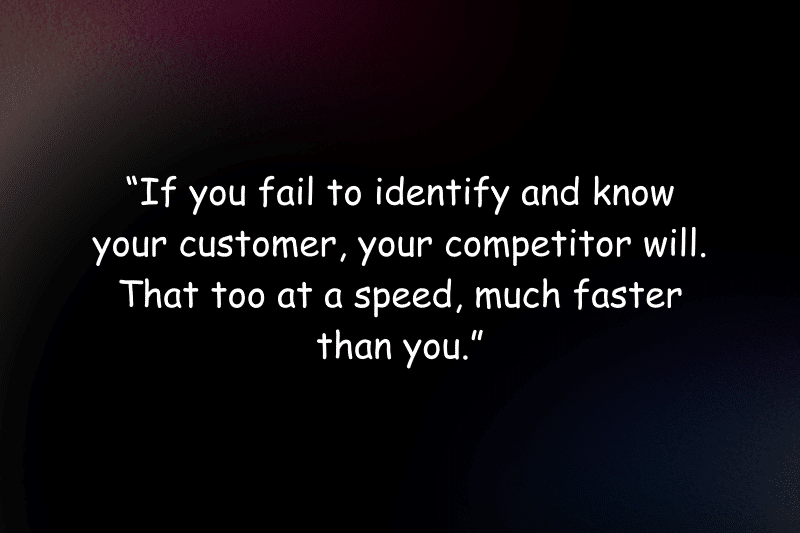
In SaaS marketing, knowing your customer is everything. Cracking their demographics, buying behaviors, likes, dislikes, etc., will help you win in the long run.
But what is an ICP? ICP or Ideal Customer Profile is a detailed record of the type of customers that can potentially benefit by using your SaaS product.
By defining your ICP, you will be in a better position to direct your marketing efforts to the right people, thus reducing monetary and mental resource wastage on unqualified leads.
Here, knowing those factors that matter the most while creating an ICP is important:
- Industry & Company Size – What domains can benefit the most by using your software? Who are your targets – funded or bootstrapped startups, mid-sized businesses, or giant enterprises?
- Job Titles & Decision-Makers – Who is most likely to make the purchase decision? Is it the CEO, the IT Manager, or the Marketing Head? Who will be your potential POC?
- Pain Points & Goals – What challenges do you feel they face regularly and how does your product fit in and solve their problems?
- Budget & Buying Behavior – What is the estimated amount you & your research feel they can invest in a SaaS solution like yours? What are the cross-questions they will likely shoot at you during negotiation?
5 Key Challenges SaaS Marketers Face Regularly
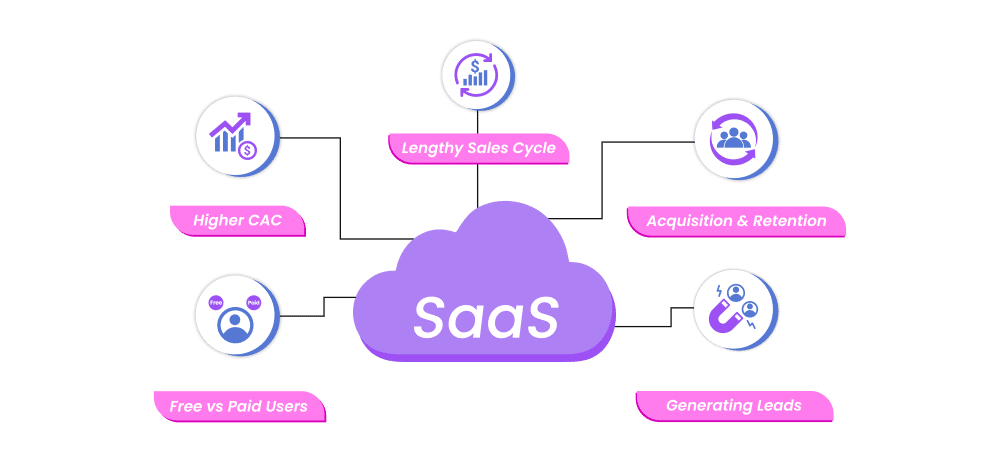
There are tons of challenges in B2B SaaS marketing.
And for standing out, marketers are always looking for ways to smoothly navigate the cut-throat competitive SaaS market, competition, dynamic business requirements, user expectations, etc.
Here are the top 5 challenges marketers generally face:
1. High Customer Acquisition Cost [CAC]
For SaaS marketers, CAC has and will always remain a key concern as it has direct implications on a startup’s success.
CAC is simply a particular amount that you’re spending to acquire a customer. Now this should be less than what the customer is spending to purchase your product.
Often, SaaS startups end up spending excess capital on marketing their products but somehow, are unable to generate considerable revenue due to poor marketing resources and other reasons.
As a result, the profit margin drops, thus impacting the business’s bottom line and operational efficiency.
2. Lengthy Sales Cycles
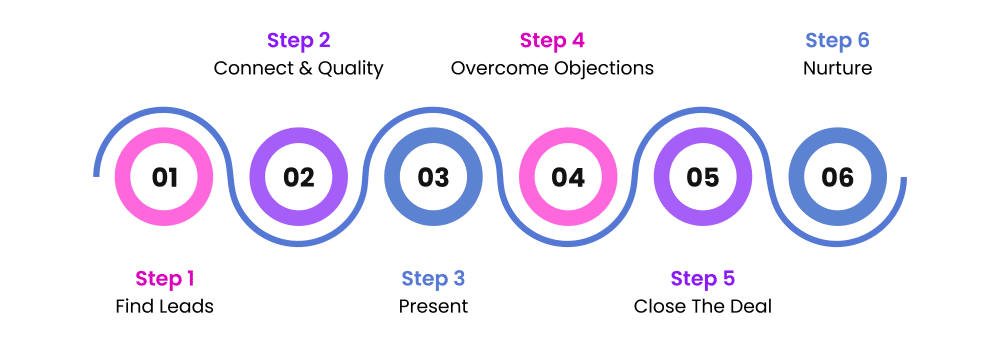
Here when we’re talking briefly about B2B SaaS marketing, it’s a no-brainer that there is going to be more than one stakeholder involved.
The involvement of multiple decision-makers thus delays the entire decision-making process. Every aspect related to product feasibility, scope of product impact, etc., is considered under the key heading of ROI.
This is especially true in competitive SaaS categories like global payroll and compliance, where buyers may spend weeks evaluating vendors. Companies evaluating Deel vs Remote, for example, must weigh factors such as compliance capabilities, integrations, and customer support.
Here are the possible implications: A longer sales cycle may result in increased resource consumption and maybe inefficiency in product effectiveness.
The only solution to shorten lengthy sales cycles is to locate and remove existing bottlenecks in prospect communication, pitching materials, objection handling, etc.
3. Balancing Acquisition and Retention
This is an interesting balance for marketers to figure out to keep their SaaS business on track.
And particularly here, the concept of LTV [lifetime value] comes into the picture.
So the need is to identify the sweet spot that drives maximum revenues in the face of new customers and also continues to provide quality services to the existing ones.
4. Generating Leads
The biggest challenge, by all means, is generating quality leads for your SaaS products.
And it isn’t easy. In a crowded market where new players emerge every day with differentiating features, your product may become invisible if the product messaging fails.
Because if they don’t get what your product is and how it can help solve their problems, they’re gone.
Now, this also depends on how well your target audience knows your product. If it isn’t showing up on commercial intent-based keywords, your product is likely to do nothing good.
Apart from clear messaging, longer sales cycles consisting of multiple decision-makers are also a mighty reason why many deals end up closed but without a contract!
Unless they’re convinced about your product’s potential, they’re unlikely to move on from their existing tech solution.
5. Free vs Paid Users
Converting free users to paid ones is another headache SaaS marketing is surrounded by.
While freemium models are an excellent way of acquiring users at lower costs, convincing them to upgrade to your paid plans can be tricky.
There could be hundreds of instances where users sign up for your product, research what’s in store for them, use it for a few days, and suddenly disappear on the day when their free trial ends.
Here, smooth user onboarding and on-point product communication can help generate more value in their minds. Also, communicating with them about what they might be missing by not upgrading to a paid plan can help.
So how do you fix these challenges, and what’s the road to reducing your Customer acquisition costs and increasing LTV?
6 SaaS Marketing Strategies You Must Implement For Growth
The right strategy will get you in front of your target customers’ eyes while the wrong one will end up burning your capital and even losing out your existing customers.
So what is really important here is to understand who your customers are, what they like about you, and what’s the best channel to reach them in less time and resources.
Here are the top 6 strategies marketers generally love to execute:
1. SEO for SaaS
For SaaS marketers, this is the most preferred strategy because it’s pocket-friendly. 🙂
Through organic search, marketers aim to create quality educational content that slowly helps them make potential buyers a part of the customer funnel.
Once these prospects are in, different content marketing methods are used to retain their attention and push them toward product demos, free trial opt-ins, etc.
Check out below how SaaS SEO and content marketing can be a game-changer for your SaaS product:
- Content Marketing
This involves creating quality materials in the form of guides, e-books, newsletters, free resources, etc., to capture potential buyers’ data.
Later, that same data is leveraged in email marketing campaigns that retarget them at regular intervals.
Now, here’s the problem: SEO Content marketing is vast and contains multiple formats. Without an ICP-specific framework, targeting visitors can be tricky.
In the video below, I’ve broken down the entire step-by-step framework used by leading Saas companies like Hubspot, Zapier, etc., in just 3 minutes.
As an experienced SaaS SEO company, we’ve developed fool-proof methodologies to help you rank your SaaS product.
Contact us today, and let’s discuss your requirements.
While the video offers you a detailed process, here’s a quick cheat sheet curated by Niall Ratcliffe, which provides quick fingertip ideas for B2B SaaS marketing:
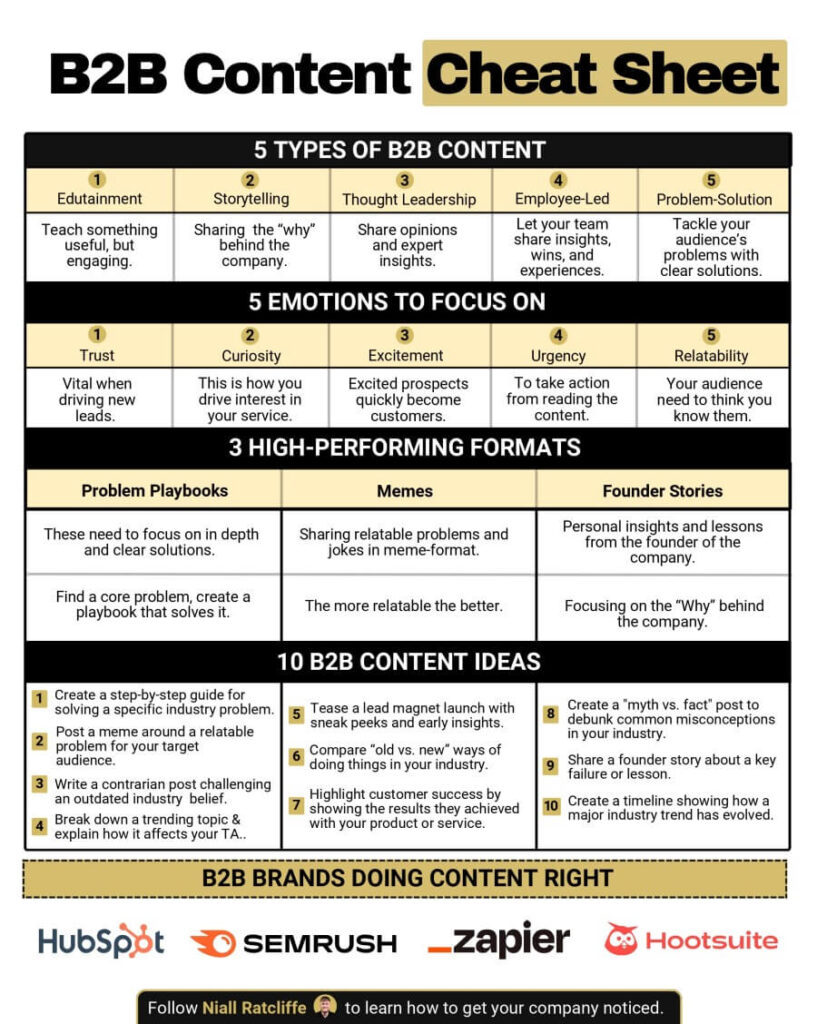
2. Video Marketing
As per Statista, YouTube (78%) and Facebook (71%) come out as the most effective video marketing channels.
Marketing your videos on the right channels and in the right manner will help you generate better brand awareness and customer leads.
By tapping their audiences correctly, top SaaS brands like Slack, ClickUp, Adobe, etc., are benefiting from video marketing strategies using engaging SaaS explainer videos to better explain their products.
Here are 3 reasons why video marketing is a winning strategy for your SaaS product:
1. Cross-Platform Accessibility: You can integrate your video on your website’s landing page as well as on social channels simultaneously.
Catering to two different audience sets will help you generate more visibility and traffic to your website.
Here’s how one of our clients StayFi increased their product’s awareness by embedding their product video on the homepage:
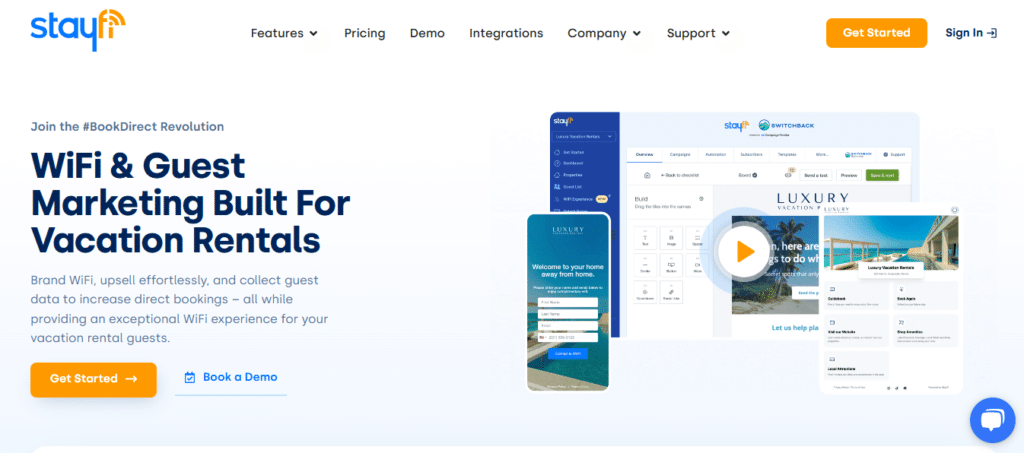
2. Addresses User Queries: No one prefers reading FAQs or product manuals to find answers to their queries. Videos help address user queries much faster and improve overall customer experience.
Here’s how Asana is catering to its users through multiple YouTube videos explaining different product features:
3. Increases Lead Generation Chances: With diversified visibility across the internet, your product is now known by your target customers at multiple touchpoints.
These touchpoints if optimized well can result in attracting quality leads to your website for better revenue scoring.
3. Email Marketing
Many SaaS marketers believe that hunting customers via email isn’t a promising activity to indulge in.
However, emails work wonders if targeted strategically and carry the potential to largely boost product signups and overall clicks.
But how you can leverage the power of emails to promote your SaaS product?
Here are a few tips:
- Create short and crisp email templates around the key problems your product solves.
- You can also strategize and execute targeted campaigns sharing product features, success stories, etc., based on the sales funnel stage your prospect is on currently.
- A lot of marketers use the video mail technique to grab attention quickly.
- Create a newsletter for your existing user base. If you’re a new startup, invest efforts in collecting data from your target customers and nurture them with educational content that sparks the need to purchase your product.
By analyzing and performing A/B testing, you can optimize your email’s performance and find ways to boost click-through rates.
4. Referral Marketing
Not many marketers use this marketing strategy, but if executed well, it can bring a considerable amount of product reach and leads from target customers.
What you need to do is craft a referral program strategy and send it to existing customers in exchange for a mini-plan upgrade, discount coupons, or other monetary rewards.
The intention here should be to incentivize this set of customers and subtly convince them to be your product’s ambassador.
You can generate referral links and encourage your existing customers to invite their colleagues, partners, CMOs, etc., for free trials.
- Free Trials
Free trials are an excellent way to attract potential customers and provide them with hands-on experience with your software.
By allowing them to use your software for free, you can increase conversion chances as after the free trial ends, there are high chances they will sign up for a paid plan if your product comes out to be a perfect solution to their problems.
A few SaaS brands doing extremely well by offering free trials or a Freemium model include Asana, Freshworks, Timely, etc.
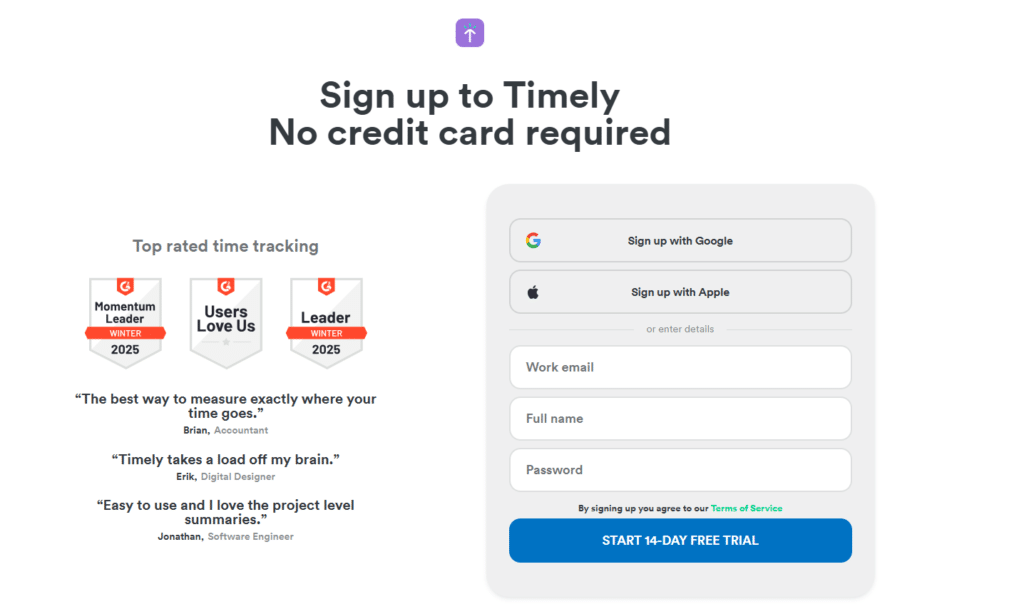
5. Position Yourself as a Subject Matter Expert [SME]
By positioning yourself as a Subject Matter Expert, you can build your niche audience who see you as an expert in SaaS marketing, AI SaaS integrations, or even B2B sales for that matter.
You can turn your website’s blog into a source of trusted information that people look forward to. Or you can establish yourself on LinkedIn or social media platforms like X or Reddit.
The key agenda here is to attract different types of buyers toward exploring your product and the problems it solves.
For instance, Hubspot’s CTO Dharmesh Shah has been quite active on LinkedIn with his thoughts on finding out the best PMF, B2B SaaS strategies, AI adoptions, etc.
Here’s his recent post:
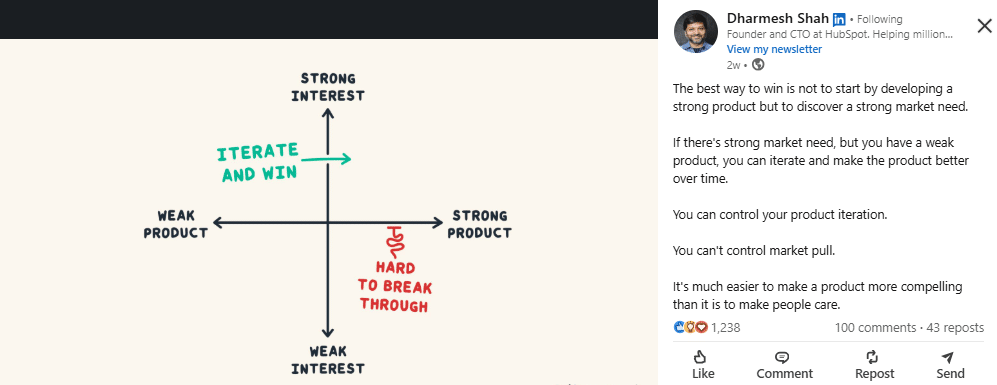
6. Leverage Social Media
Many SaaS marketers believe that their industry or product isn’t cool enough for strategies deployed by B2C brands.
That’s not true. Brands like Zapier, SemRush, Adobe, etc., have tweaked their content approaches and integrated funny & relatable yet informative content in their SaaS marketing strategies.
You can leverage social media platforms like Instagram and X and access a wider playground and much quicker access to your target customers.
The more your potential buyers see your product in motion and the benefits it offers, the more inbound and qualified leads will flow to your website or landing page.
Or you can even create WhatsApp, Slack, or Reddit communities for close engagement with your users.
Check out below how SemRush shares meme-driven content alternatively to engage its audience and boost brand recall.
Across LinkedIn, Facebook, and Instagram, they have established a quirky identity that keeps users coming back to their profiles.

Marketing a SaaS product requires you to be highly alert about your customers’ buying psychology and behavior.
Knowing this will allow you to communicate your product’s key features and benefits in a manner, near to almost converting them from prospects to buyers.
4 SaaS Marketing Benefits You Should Know
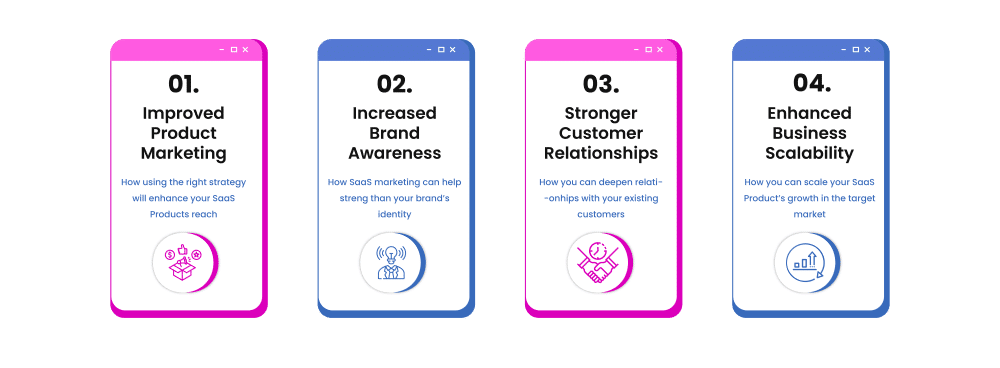
1. Improved Product Marketing
As a B2B SaaS marketer, you are already aware of the pain points your prospects face.
This means you’re in a better position to tailor your target messaging and product communication that resonates with their problems effectively.
You just need to pick the right strategy whether it’s content marketing, customer testimonial videos, free consultations, etc., to win their attention and enhance your product’s reach.
2. Stronger Customer Relationships
There’s a simple and only way to retain your customers for a longer period on your platform, i.e.,
Be there whenever your customer encounters a problem using your platform.
SaaS B2B marketing encapsulates the whole idea of acquiring, nurturing, and retaining your customers in the best manner to reduce churn rate and boost customer loyalty.
Multiple ways to maintain a healthy relationship with your customers:
- Keeping in touch with them with personalized emails.
- Interacting with them on social media platforms such as Reddit, X, or even LinkedIn.
- Address their grievances swiftly and assist them to make the best of your platform.
3. Increased Brand Awareness
Apart from helping you spread your product’s reach through SEO, Paid marketing, Referral marketing, etc., you can even create thought leadership blog content around your SaaS product.
This will benefit you in the long run by providing your potential customers with a deeper insight into your product’s build and how it can solve their business problems.
Another sure-shot way how SaaS brands to benefit from increased brand awareness is by attending technology meetups, conventions, and conferences.
The reason is that it allows them easy access and an opportunity to penetrate global markets and increase their customer base.
4. Enhanced Customer Scalability
SaaS marketing facilitates customer scalability by attracting, converting, and retaining customers efficiently.
Through targeted campaigns, marketers can reach a broad audience and tailor messaging to different customer segments. Automation tools streamline onboarding processes, ensuring a seamless experience for a growing user base.
Scalable pricing models, easily understandable through marketing channels, accommodate diverse customer needs.
Leveraging data analytics allows marketers to identify scalable customer acquisition channels and optimize campaigns for maximum impact.
Ultimately, a well-executed SaaS marketing strategy supports the seamless expansion of the customer base, ensuring scalability as the product gains popularity.
Wrapping Up
The ongoing SaaS product marketing landscape is pretty dynamic in terms of changing customer demands, technological advancements, etc.
As SaaS marketers, your aim should be to deeply study your product’s dimensions, target users, demographics, etc., and choose a suitable marketing strategy for better results.
We’re an animated video production company helping top SaaS brands market their complex products effectively within 90-120 seconds through storytelling and visuals.


